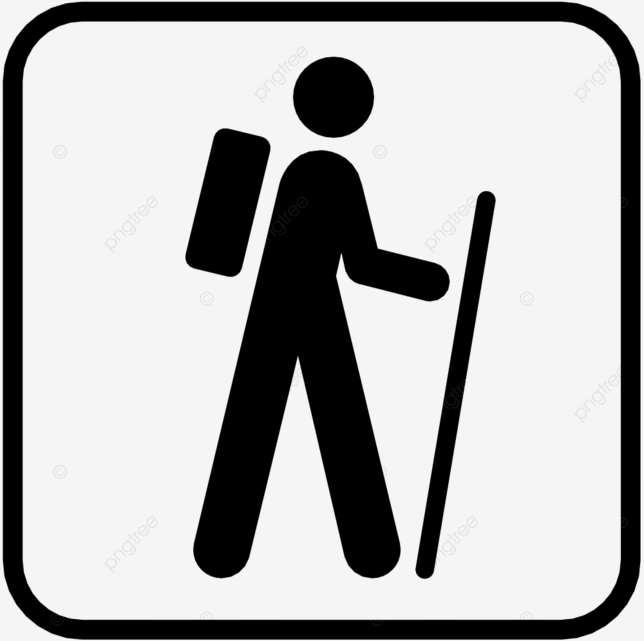
At a Glance
Adventure Type:Backpack
Trail Map: Trail_map
Length: 6.1 mi
Difficulty: moderate
Elevation: 938 ft
Trail Type: out and back
Surface: dirt
Return Time: Sun 1:15pm
Meet Time: Sat 10:00am
Est Cost: 0
Health form parts: ABB
Location: Frog Lake Sno-Park/Trailhead, Oregon
Note: Entry-level
Backpack Upper Twin Lakes - 6.1mi
Head out on this 6.1-mile out-and-back trail near Government Camp, Oregon. Generally considered a challenging route, it takes an average of 2 h 43 min to complete. This is a very popular area for backpacking, birding, and camping, so you'll likely encounter other people while exploring. The trail is open year-round and is beautiful to visit anytime.
- alltrails - oregonhikers - Google maps
Guide to Safe Scouting
Adults complete the following:- SAFE Checklist
- Boy Scouts of America Scouter Code of Conduct
- Youth Protection and Adult Leadership
- Camping
- Chemical Fuels and Equipment
- Activity Planning and Risk Assessment
- Sports and Activities
- Insurance
- Transportation
- Animal and Insect Hazards
- Incident Reporting
Pre-hikes, endurance training
How are we going to prep?
Pre-hikes, endurance training
What age appropriate modifications can be made?
This is an entry-level trek
Gear
- 10 Essentials
- Hiking boots
- Hiking Poles
- Backpack
Pre-Adventure Skillsets
- Backpacking
- Be Prepared
- Buddy System
- Cooking & Tools
- First Aid
- Leave No Trace
- Map & Compass
- Nature
- Hiking
Sample Agenda
Sat 10:00 am Arrive at CCC 10:30 am Drive to Twin Lakes Hiking Trailhead, Pacific Crest Nat'l Scenic Trl, Government Camp, OR 97028 12:00 Lunch (Sack) 1:00 pm Hike to upper Twin Lakes 4:00 pm Arrive at Upper Twin Lakes Campground 4:30 pm Setup Camp & start dinner 6:30 pm Go over requirements 10:00 pm Lights out Sun 7:00 am Wake & prepare breakfast 8:00 am break camp 8:30 am Hike back to Twin Lakes Hiking Trailhead 11:30 am Arrive at Parking lot & pack 11:45 am Head to CCC 1:15 pm Arrive at CCC
Rank Requirements
key: At Meeting / On Adventure
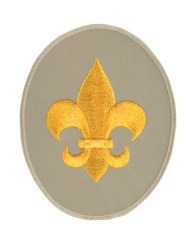
Scout
1e. Repeat from memory the Outdoor Code. List the Leave No Trace Seven Principles. Explain the difference between the two.
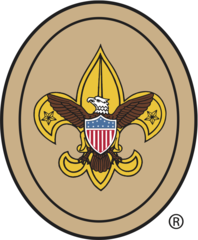
Tenderfoot
1c. Explain how you demonstrated the Outdoor Code and Leave No Trace on campouts or outings.
4a. Show first aid for the following: Simple cuts and scrapes, Blisters on the hand and foot, Minor (thermal/heat) burns or scalds (superficial, or first-degree), Bites or stings of insects and ticks, Venomous snakebite, Nosebleed, Frostbite and sunburn, Choking
5a. Explain the importance of the buddy system as it relates to your personal safety on outings and where you live. Use the buddy system while on a troop or patrol outing.
5b. Describe what to do if you become lost on a hike or campout.
5c. Explain the rules of safe and responsible hiking, both on the highway and cross-country, during the day and at night.
5d. Explain why it is important to hike on trails or other durable surfaces, and give examples of durable surfaces you saw on your outing.
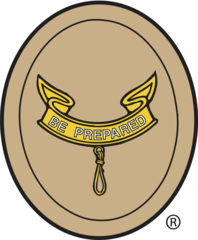
Second Class
1b. Recite the Leave No Trace Seven Principles from memory. Explain how you follow them on all outings.
3a. Demonstrate how a compass works and how to orient a map. Use a map to point out and tell the meaning of five map symbols.
3c. Describe some hazards or injuries that you might encounter on your hike and what you can do to help prevent them
4. Identify or show evidence of at least 10 kinds of wild animals (such as birds, mammals, reptiles, fish, or mollusks) found in your local area or camping location. You may show evidence by tracks, signs, or photographs you have taken.
Awards
key: At Meeting / On Adventure
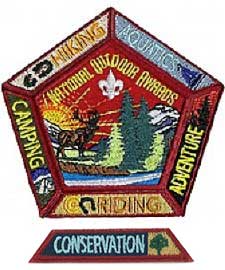
National Outdoor Hiking Segment
2. Complete the requirements for at least one of the following: - Cycling merit badge or Ranger Cycling/Mountain Biking elective and 100 miles of cycling - Horsemanship merit badge or Ranger Equestrian elective and 20 miles of horseback riding - Motorboating merit badge or Ranger Watercraft elective and 100 miles of motor boating - Skating merit badge or Ranger Winter Sports elective and 20 miles of skating
3. Complete 200 miles of riding activities, including cycling, stock riding, skating, motor boating, mountain boarding, (including ATV or PWC riding at an approved council program), under the auspices of the Boy Scouts of America, including the miles in requirement 2.
Merit Badges
key: At Meeting / On Adventure
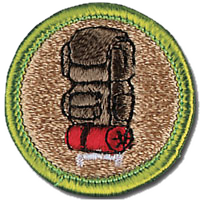
Backpacking
1. Discuss the prevention of and treatment for the health concerns that could occur while backpacking, including hypothermia, heat reactions, frostbite, dehydration, insect stings, tick bites, snakebite, and blisters.:
2a. List 10 items that are essential to be carried on any backpacking trek and explain why each item is necessary.
2b. Describe 10 ways you can limit the weight and bulk to be carried in your pack without jeopardizing your health or safety.
3a. Define limits on the number of backpackers appropriate for a trek crew.
3b. Describe how a trek crew should be organized.
3c. Tell how you would minimize risk on a backpacking trek.
3d. Explain the purpose of an emergency response plan.
4a. Describe the importance of using Leave No Trace principles while backpacking, and at least five ways you can lessen the crews impact on the environment.
4b. Describe proper methods of handling human and other wastes while on a backpacking trek. Describe the importance of and means to assure personal cleanliness while on a backpacking trek.
4c. Tell what factors are important in choosing a campsite.
5a. Demonstrate two ways to treat water and tell why water treatment is essential.
5b. Explain to your counselor the importance of staying well hydrated during a trek.
6a. Demonstrate that you can read topographic maps.
6b. While on a trek, use a map and compass to establish your position on the ground at three different locations, OR use a GPS receiver to establish your position on a topographic map and on the ground at three different locations.
6c. Explain how to stay found, and what to do if you get lost.
7. Tell how to prepare properly for and deal with inclement weather.:
8a. Explain the advantages and disadvantages of the different types of backpacking stoves using at least three different types of fuel.
8b. Demonstrate that you know how to operate a backpacking stove safely and to handle liquid fuel safely.
8c. Prepare at least three meals using a stove and fuel you can carry in a backpack.
8d. Demonstrate that you know how to keep cooking and eating gear clean and sanitary , and that you practice proper methods for food storage while on a backpacking trek.
9a. Write a plan that includes a schedule for a patrol/crew backpacking hike of at least 2 miles.
9b. Conduct a prehike inspection of the patrol and its equipment.
9c. Show that you know how to properly pack your personal gear and your share of the crews gear and food.
9d. Show you can properly shoulder your pack and adjust it for proper wear.
9e. While using the plan you developed for requirement 9a, carry your fully loaded pack to complete a hike of at least 2 miles.
10. Using Leave No Trace principles, participate in at least three backpacking treks of at least three days each and at least 15 miles each, and using at least two different campsites on each trek. Carry everything you will need throughout the trek.:
11a. Write a plan for a backpacking trek of at least five days using at least three different campsites and covering at least 30 miles. Your plan must include a description of and route to the trek area, a schedule (including a daily schedule), a list of food and equipment needs, a safety and emergency plan, and a budget.
11b. Using Leave No Trace principles, take the trek as planned in requirement 11a that is at least five full days, covering at least 30 miles and utilizing at least three different campsites. While on trek, complete at least one service project approved by your merit badge counselor.
11c. Keep a daily journal during the trek that includes a day-by-day description of your activities, including notes about what worked well and thoughts about improvements that could be made for the next trek.
Flier
www.Sherwood116.com
Troop 116
Backpack @ Backpack Upper Twin Lakes - 6.1miHead out on this 6.1-mile out-and-back trail near Government Camp, Oregon. Generally considered a challenging route, it takes an average of 2 h 43 min to complete. This is a very popular area for backpacking, birding, and camping, so you'll likely encounter other people while exploring. The trail is open year-round and is beautiful to visit anytime.

Backpack!
Backpack Upper Twin Lakes - 6.1mi
Government Camp, Oregon
Government Camp, Oregon

Sat 10:00am - Sun 1:15pm

meet at Cedar Creek Church on < date > @ Sat 10:00am

Whole Troop!
We’ll meet at Cedar Creek Church @ Sat 10:00am and carpool to Backpack Upper Twin Lakes - 6.1mi in Government Camp, Oregon.
Gear
- 10 Essentials
- Hiking boots
- Hiking Poles
- Backpack
Skills
- Backpacking
- Be prepared
- Buddy System
- Cooking & Tools
- First aid
- Leave no trace
- Map & Compass
- Nature
- hiking

Make sure to register on troopmaster,
look for the link in your email!!!
look for the link in your email!!!



Troop 116
T-Program Planningfor Campout
Prior to T-5, the PLC should have determined (and dates below):
Outing Event:________________________
Event Date:_______________
Location: ___________________________
Scout in charge: ______________________
QR Code/URL for drive
Itinerary:
Special activities and equipment needed for the outing:
T-5 Date:_______________
- Patrol Leaders hand out event flyers and permission slips and get a straw count.
- Patrol Leaders assign Grubmasters and Assistant Grubmasters (based on advancement
- needs).
- Patrols plan their camp activities.
T-4 Date:_______________
- (PLC assigns SPL and PL’s in charge of outing, SM/ASM’s identify the tour leader.)
- Scouts return permission slips and trip fees to their Patrol Leaders.
- Grubmasters presents menus, make necessary changes, and get SPL/ASM approvals.
- Patrols discuss activity materials and assign Scouts responsible for acquiring materials.
- Patrols plan campfire skits and songs.
T-3 Date:_______________
- Grubmasters assign duty roster responsibilities within their patrols.
- Patrols assign/select tent partners.
- Patrols discuss gear needs and who brings what. Patrol Quartermaster makes gear list
T-2 Date:_______________
- Patrols finalize activity and campfire plans – get SPL/ASM approval.
- Patrols finalize gear and equipment needs, make arrangements with Troop Quartermaster.
T-1 Date:_______________
- Patrols check out tents and other camping gear.
- Grubmasters check out necessary cooking gear.
- Grubmasters receive food money from the troop treasurer.
- Patrols discuss free-time activities.
- Troop Gear Check
T+1 Date:_______________
- Patrols and Grubmasters check in gear and inventory sheets.
- Patrols complete event evaluation.
Week 1

Month's Theme: Backpack
Topic: ________________
Date: _____________
Topic: ________________
Date: _____________

Activity
Description
Run By
Time
Pre-opening Activity
Opening Ceremony
- - Flag presentation
- - Oath and Law
- - Uniform inspection
Group Instruction
- - Leave No Trace
- - First Aid
- - Backpacking
Skills Instruction
Scout - Tenderfoot
Scout - Tenderfoot
-

1e. Repeat from memory the Outdoor Code. List the Leave No Trace Seven Principles. Explain the difference between the two. [Leave No Trace]
-

1c. Explain how you demonstrated the Outdoor Code and Leave No Trace on campouts or outings. [Leave No Trace]
-
5d. Explain why it is important to hike on trails or other durable surfaces, and give examples of durable surfaces you saw on your outing. [Leave No Trace]
2nd - 1st
-

1b. Recite the Leave No Trace Seven Principles from memory. Explain how you follow them on all outings. [Leave No Trace]
Merit Badge
-

4a. Describe the importance of using Leave No Trace principles while backpacking, and at least five ways you can lessen the crews impact on the environment. [Leave No Trace]
-
1. Discuss the prevention of and treatment for the health concerns that could occur while backpacking, including hypothermia, heat reactions, frostbite, dehydration, insect stings, tick bites, snakebite, and blisters.: [First Aid]
-
2a. List 10 items that are essential to be carried on any backpacking trek and explain why each item is necessary. [Backpacking]
Patrol Breakouts
- - T-Minus activities (Duty roster/Menu/etc)
- - Patrol outing planning
- - Advancement check-in (see how advancement is going and what is needed -> report to SPL)
- - (Seasonal planning) Summer camp activities, APC Ideas
Game
Closing
- - Closing Flags
- - Announcements
- - SM’s minute
Total 90 minutes of meeting
After the meeting
Leadership team reviews plans for the next meeting and for the main event.
Week 2

Month's Theme: Backpack
Topic: ________________
Date: _____________
Topic: ________________
Date: _____________

Activity
Description
Run By
Time
Pre-opening Activity
Opening Ceremony
- - Flag presentation
- - Oath and Law
- - Uniform inspection
Group Instruction
- - First Aid
- - Backpacking
Skills Instruction
Scout - Tenderfoot
Scout - Tenderfoot
-

4a. Show first aid for the following: Simple cuts and scrapes, Blisters on the hand and foot, Minor (thermal/heat) burns or scalds (superficial, or first-degree), Bites or stings of insects and ticks, Venomous snakebite, Nosebleed, Frostbite and sunburn, Choking [First Aid]
2nd - 1st
-

3c. Describe some hazards or injuries that you might encounter on your hike and what you can do to help prevent them [First Aid]
Merit Badge
-

2b. Describe 10 ways you can limit the weight and bulk to be carried in your pack without jeopardizing your health or safety. [Backpacking]
-
3a. Define limits on the number of backpackers appropriate for a trek crew. [Backpacking]
-
3b. Describe how a trek crew should be organized. [Backpacking]
-
4b. Describe proper methods of handling human and other wastes while on a backpacking trek. Describe the importance of and means to assure personal cleanliness while on a backpacking trek. [Backpacking]
Patrol Breakouts
- - T-Minus activities (Duty roster/Menu/etc)
- - Patrol outing planning
- - Advancement check-in (see how advancement is going and what is needed -> report to SPL)
- - (Seasonal planning) Summer camp activities, APC Ideas
Game
Closing
- - Closing Flags
- - Announcements
- - SM’s minute
Total 90 minutes of meeting
After the meeting
Leadership team reviews plans for the next meeting and for the main event.
Week 3

Month's Theme: Backpack
Topic: ________________
Date: _____________
Topic: ________________
Date: _____________

Activity
Description
Run By
Time
Pre-opening Activity
Opening Ceremony
- - Flag presentation
- - Oath and Law
- - Uniform inspection
Group Instruction
- - Backpacking
- - Nature
- - Hiking
- - Map & Compass
- - Buddy System
Skills Instruction
Scout - Tenderfoot
Scout - Tenderfoot
-

5a. Explain the importance of the buddy system as it relates to your personal safety on outings and where you live. Use the buddy system while on a troop or patrol outing. [Buddy System]
-
5c. Explain the rules of safe and responsible hiking, both on the highway and cross-country, during the day and at night. [Hiking]
2nd - 1st
-

3a. Demonstrate how a compass works and how to orient a map. Use a map to point out and tell the meaning of five map symbols. [Map & Compass]
Merit Badge
-

6a. Demonstrate that you can read topographic maps. [Map & Compass]
-
7. Tell how to prepare properly for and deal with inclement weather.: [Nature]
-
3b. Describe how a trek crew should be organized. [Backpacking]
-
4b. Describe proper methods of handling human and other wastes while on a backpacking trek. Describe the importance of and means to assure personal cleanliness while on a backpacking trek. [Backpacking]
Patrol Breakouts
- - T-Minus activities (Duty roster/Menu/etc)
- - Patrol outing planning
- - Advancement check-in (see how advancement is going and what is needed -> report to SPL)
- - (Seasonal planning) Summer camp activities, APC Ideas
Game
Closing
- - Closing Flags
- - Announcements
- - SM’s minute
Total 90 minutes of meeting
After the meeting
Leadership team reviews plans for the next meeting and for the main event.
Week 4

Month's Theme: Backpack
Topic: ________________
Date: _____________
Topic: ________________
Date: _____________

Activity
Description
Run By
Time
Pre-opening Activity
Opening Ceremony
- - Flag presentation
- - Oath and Law
- - Uniform inspection
Group Instruction
- - Cooking & Tools
- - Be Prepared
- - Backpacking
Skills Instruction
Scout - Tenderfoot
Scout - Tenderfoot
-

5b. Describe what to do if you become lost on a hike or campout. [Be Prepared]
2nd - 1st
Merit Badge
-

3c. Tell how you would minimize risk on a backpacking trek. [Be Prepared]
-
3d. Explain the purpose of an emergency response plan. [Be Prepared]
-
6c. Explain how to stay found, and what to do if you get lost. [Be Prepared]
-
8a. Explain the advantages and disadvantages of the different types of backpacking stoves using at least three different types of fuel. [Cooking & Tools]
-
8b. Demonstrate that you know how to operate a backpacking stove safely and to handle liquid fuel safely. [Cooking & Tools]
-
4c. Tell what factors are important in choosing a campsite. [Backpacking]
-
5a. Demonstrate two ways to treat water and tell why water treatment is essential. [Backpacking]
Patrol Breakouts
- - T-Minus activities (Duty roster/Menu/etc)
- - Patrol outing planning
- - Advancement check-in (see how advancement is going and what is needed -> report to SPL)
- - (Seasonal planning) Summer camp activities, APC Ideas
Game
Closing
- - Closing Flags
- - Announcements
- - SM’s minute
Total 90 minutes of meeting
After the meeting
Leadership team reviews plans for the next meeting and for the main event.